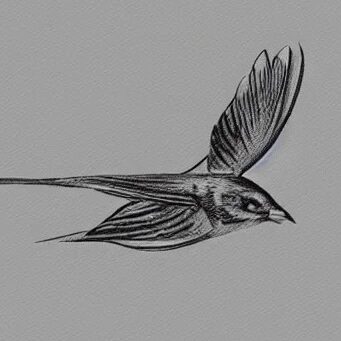The decline of bird populations is a complex issue that demands our attention. This article delves into the various factors contributing to this decline, focusing on the specific bird species experiencing a decrease in numbers.
Loss of habitat, climate change, invasive species, and pollution are among the primary culprits negatively impacting bird populations. By understanding their migration patterns, navigation cues, and the physically strenuous process of migration, we can gain valuable insights into their decline.
Numerous organizations and initiatives have emerged to address this alarming trend, focusing on bird conservation through habitat protection, restoration, tracking programs, and public awareness and education. However, challenges such as climate change, habitat loss, pollution, invasive species, and illegal hunting and poaching continue to threaten bird survival.
Recognizing the pivotal role birds play in ecosystems as pollinators, seed dispersers, pest controllers, and indicators of environmental health underscores their importance in maintaining ecological balance and the economic benefits they bring through ecotourism.
Contents
Key Takeaways
- Loss of habitat, climate change, invasive species, and pollution are the main factors contributing to declining bird populations.
- Bird migration is challenged by habitat loss, climate change, and the physical demands of migration.
- Conservation efforts focus on protecting and restoring habitats, collecting data on migratory patterns, raising public awareness, and promoting collaboration among organizations, scientists, and policymakers.
- Threats to bird survival include climate change, habitat loss, pollution, invasive species, and illegal hunting and poaching.
Factors Contributing to Declining Bird Populations
Loss of habitat, climate change, invasive species, and pollution are the primary factors contributing to the declining populations of birds.
The loss of natural habitats due to urbanization, deforestation, and conversion of land for agriculture has significantly impacted bird populations. This loss of habitat disrupts breeding and nesting patterns, reduces food availability, and limits the overall survival of bird species.
Climate change also poses a significant threat to birds, affecting their migratory patterns, breeding success, and food availability. Changes in temperature and precipitation patterns can alter the timing of migration, leading to mismatches with food sources and reducing the chances of survival.
Invasive species, such as predatory animals and non-native plants, can outcompete native species for resources, disrupt ecosystems, and directly impact bird populations.
Pollution, including pesticides, heavy metals, and chemical contaminants, can accumulate in birds’ bodies, leading to reproductive issues, weakened immune systems, and reduced survival rates.
These factors collectively pose a grave threat to the survival of bird populations worldwide.
Bird Migration and Its Challenges
Bird migration, with its complex navigation and physically demanding process, presents numerous challenges for birds as they travel long distances in search of suitable habitats and resources.
Migration patterns vary among species, with some birds traveling thousands of kilometers each year.
These journeys require birds to rely on a combination of internal cues, such as hormonal changes, and external cues, such as the position of the sun and stars, to navigate accurately.
However, factors like habitat loss and climate change can disrupt these cues, leading to navigational errors and increased mortality rates.
Additionally, the physical demands of migration, including the need for sufficient food and resting areas along the route, can further jeopardize the success of bird migrations.
Consequently, conservation efforts must address these challenges to ensure the survival of migratory bird populations.
Bird Conservation Efforts and Initiatives
Numerous organizations and initiatives have been established to address the declining populations of birds and to implement effective conservation measures.
These efforts are essential in protecting the diverse avian species that play crucial roles in ecosystems.
One such initiative is the establishment of organizations dedicated to bird conservation, such as the National Audubon Society and BirdLife International. These organizations focus on protecting and restoring habitats, as loss of habitat is a significant factor contributing to declining bird populations.
Additionally, bird banding and tracking programs provide valuable data on migratory patterns and population trends.
Public awareness and education campaigns are also crucial, as they promote understanding and support for bird conservation.
Collaborative efforts among organizations, scientists, and policymakers are essential for the effective conservation of bird populations.
Threats to Bird Survival
One of the major challenges facing bird populations is the increasing threats to their survival. Climate change, habitat loss, pollution, invasive species, and illegal hunting and poaching are the primary factors contributing to the decline in bird populations.
Climate change alters the availability of food sources and disrupts migration patterns, affecting the timing and success of breeding.
Habitat loss, driven by urbanization, deforestation, and agriculture, reduces nesting sites and food availability.
Pollution, such as air and water pollution, affects bird health and reproductive success.
Invasive species compete with native birds for resources and can prey on their eggs and young.
Illegal hunting and poaching further deplete bird populations, especially in areas where they are valued for their feathers, meat, or as pets.
Addressing these threats requires comprehensive conservation efforts, including habitat protection, pollution reduction, and stricter enforcement of wildlife laws.
The Importance of Birds in Ecosystems
The declining populations of birds have significant implications for the ecosystems they inhabit. Birds play a crucial role in maintaining the balance and functioning of their respective ecosystems. Here are some key reasons why birds are important in ecosystems:
- Role in pollination and seed dispersal: Many bird species act as pollinators, transferring pollen from one plant to another, which is vital for plant reproduction. Birds also aid in seed dispersal by consuming fruits and then spreading the seeds through their droppings.
- Control of populations of pests: Birds help in controlling populations of insects and other pests by feeding on them. This natural pest control helps to maintain the health and productivity of ecosystems.
- Indicator of environmental health: Birds are often used as indicators of the overall health of an ecosystem. Changes in bird populations can signify shifts in habitat quality, pollution levels, and the impact of climate change.
Conclusion
In conclusion, the decline in bird populations is a complex issue influenced by various factors such as:
- Loss of habitat
- Climate change
- Invasive species
- Pollution
Despite the efforts of numerous organizations and initiatives focused on bird conservation, threats such as:
- Climate change
- Habitat loss
- Pollution
- Invasive species
- Illegal hunting and poaching continue to persist.
Recognizing the importance of birds in maintaining ecological balance and the economic benefits they bring through ecotourism emphasizes the need for continued conservation efforts.






